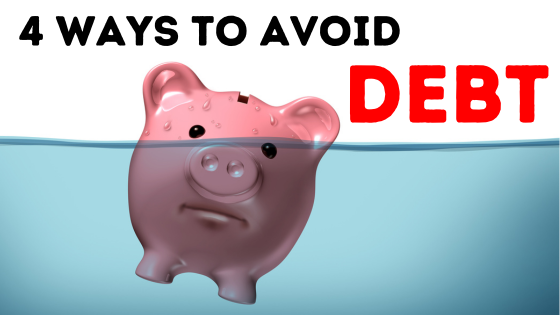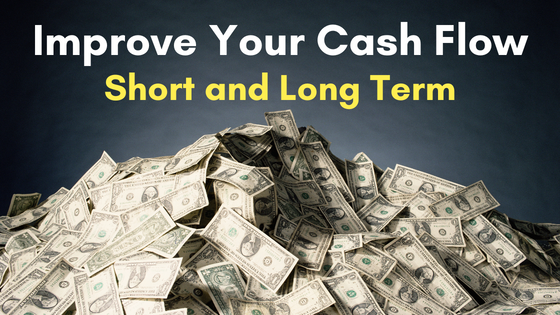
I am not a fan of debt. Not in personal finances or in business. One of the main reasons I don’t like debt is because it is EXPENSIVE! That’s right, it costs a lot of money to keep and maintain your debt. It’s called Interest Expense, and it can drain your business if you aren’t careful.
{Now, I’d be a dummy not to say that there is a good time and place to consider debt financing in a business’ life cycle, but I’ll address that another time.}
Now, the Four Ways to Avoid Debt:
Bootstrap
Bootstrap literally means, “get (oneself or something) into or out of a situation using existing resources”. Whether we consciously know it or not, we are constantly bootstrapping in our lives. We are eating the food in our refrigerator rather than eating out, we are using the clothes we have rather than buying new ones, we are fixing our cars instead of replacing them….we are bootstrapping. We all have the ability to do this, and in our business, this can save us HUGE amounts of money.
What are some of the common things you need in a business? Labor, computers, equipment, transportation, software, phone, etc… List out the things you feel like you NEED in our business right now, and then consider what you can accomplish with the current resources you have. Do you have an old computer you can clean up? Use a software tool you have rather than spring for that shiny new one? Do you have a friend who will help you out in exchange for a nice home-cooked meal? Great!
Guess what? I bootstrapped my first website! I didn’t hire a web developer to help me. Could people tell? Maybe! But did it work? YES! It helped me grow to the point where I could hire a web developer.
Use a Personal Investment
If you aren’t willing to put some of your own cash into the business, then why would someone else believe in your business enough to give you money? As a business owner, you need to believe in your business 100%. If you believe in it, you will trust that the money you put into it is a good investment.
By having investment only from yourself, you ensure that your equity (aka ownership) remains 100% with you. If other people start investing money into your business, they will expect to receive ownership usually, and that dilutes your power as the owner. I have a little breakdown of some considerations regarding equity and other people’s money HERE.
Now, you may have no extra money to put into your business, and that’s OK, not everyone does. There are a few more options…
Pre-selling or Deposits
Pre-selling your products means that you go out and sell your item (widget) before you have a full production ready. This is a great idea for a physical product.
For example:
Let’s say you design T-shirts. You could create a great 3-D image of your design and maybe even print one T-shirt for pre-sale. You would market that product, hustle a lot, and probably sell a number of T-shirts. You could take payment upfront for these, and then you could have the cash to print your T-shirts and give them to the customers. You got cash up front without having to take a big risk of ordering T-shirts on a credit card! Win!
Deposits are a way to get cash upfront, and this works well for service businesses.
For example:
Let’s say you own a graphic design company and you specialize in logos. A logo takes about 6-8 weeks to finalize. A client may not get excited about paying upfront before they see a finished product, but they also know that you have to do work before a product can be delivered. A deposit makes sense here as you would need money to operate your business while you are creating a logo design. A deposit also ensures that the customer is serious and will invest in the process with you.
Crowdfunding
Crowd-funding is a way to raise money from a group of unknown people that are excited about your idea. There are many platforms for crowdfunding like Kickstarter.com, GoFundMe.com, and Indiegogo. The way these work is that you create a sales page and rewards (gifts) for those who choose to fund you. Usually a great video explanation is created, and any product schematics or mockups are included. You would try to get strangers interested in your idea and campaign, so your page needs to be engaging and informative. As ideas get more and more backers and attention, they usually rise to the top of the searches and more funding occurs.
This system is unique because it does nor require the business owner to provide any equity (remember that’s ownership) to the backers of their campaign. The backers are usually satisfied with being a part of your business process and receiving their gift that you are offering as the incentive.
This all sounds wonderful, AND IT IS! But it does take significant effort to pull of a successful crowd-funding campaign. Consider if your product would work well with the platform and read about other people’s success stories to fuel your own creative process. Also, do your research on the right platform for your business. Here’s an article that might be helpful: https://quickbooks.intuit.com/r/crowd-funding/8-crowdfunding-sites-which-is-best-for-you/
What Else?
OK, well, I know there are more ways to avoid debt, but this will get you started. How are you avoiding debt in your business? I’d love to hear! Comment below with your story!
What’s the next step for you?
Are you ready to gain control and clarity in your business finances? Ready to take the next step to maximize profits and make confident financial decisions? We’d love to talk with you about your financial needs and help you make a path to your goals. Let’s talk.
Disclaimer: This blog and the linked videos are intended for educational purposes and should not be taken as legal or tax advice. You should consult with your financial professionals about your unique financial situation before acting on anything discussed in these videos. Clara CFO Group, LLC is providing educational content to help small business owners become more aware of certain issues and topics, but we cannot give blanket advice to a broad audience.






